Reindeers are so uniquely adapted to the dark Arctic winter, they are more likely to overheat than freeze in the cold
Reputation: Reindeer have red glowing noses and live in an unforgiving environment where food is hard to find in the winter, and where keeping warm is a major challenge
Reality: Reindeer, with one notable exception, don't have red noses. But they do have pretty sophisticated heat exchangers inside their snozzles. They also have plenty to eat through the Arctic winter. And their coats are so warm and thick that they are more likely to overheat than freeze
This time of year, reindeer get a lot of airtime. But beyond their role as the seasonal sleigh-pullers of cards and carols, reindeer are iconic animals of the North – perfectly adapted for a life of extremes.
“It is often reported that these animals live a knife edge existence in the cold, dark north,” says Nicholas Tyler of the Centre for Sami Studies at the University of Tromso, Norway. When he first began his reindeer research in the 1970s, the prevailing thought was that “the Arctic was a terrible place, and plants and animals living in the Arctic were hanging on by their toes”.
What's emerged in the past 35 years of research is an understanding that “the overwhelming majority of all individuals of all the Arctic species go through winter warm and well fed”, says Tyler.
The reindeer – Rangifer tarandus – is a perfect example.
Reindeer “are beautifully adapted”, says Tyler, who has spent decades studying them in Svalbard, the isolated archipelago between mainland Norway and the North Pole.
Reindeer coats are incredibly insulating, he explains.
Each year, they shed their thick winter coat for a short summer one. So, explains Tyler, it's only in summer – when Svalbard temperatures can dip to 1C – that this population of reindeer may occasionally be cold.
To avoid overheating, reindeer are able to flush their legs with blood
But being cold in summer is unlikely in many parts of their range. In Northern Canada, reindeer – more often called caribou – seldom have time to get cold. Here, herds of the animals are almost constantly moving in a near-futile attempt to dodge pursuit by mosquitoes.
In fact, when it comes to the cold, the reindeer’s challenge is often the reverse of what you might expect. As humans, we evolved in tropical climes, and when naked, we must ramp up our metabolism to stay warm if the temperature dips below 25C.
For reindeer, explains Tyler, that lower critical temperature is a bone-chilling -40C.
So well insulated is the reindeer in winter that for an individual trotting along with a wolf on its tail, it’s analogous to us “jogging with a down jacket on”, says Tyler. Their problem is getting rid of the heat. As a result, the reindeer has some clever adaptations for heat loss and heat conservation.
When it comes to the cold, the reindeer’s challenge is not overheating
To avoid overheating, reindeer are able to flush their legs with blood. And by training reindeer to run on treadmills, University of Tromso researcher Arnoldus Blix and colleagues discovered that reindeer can also cool down by panting like dogs, evaporating water from their large tongues.
As for the noses of wild reindeer – unlike Rudolph’s, they are not red. But, says Tyler, they “are immensely complicated”.
In winter, if it’s -30C outside, breathing humans appear to have steam coming out of their noses. For reindeer standing at rest in that very same cold air, “there isn’t any steam coming out of its nose”, he explains.
Air leaves human noses at about 32C, explains Tyler, with the water it contains condensing into visible water droplets as warm air meets cold. Reindeer have amazing heat exchangersinside their schnozzle, wherein warm air is cooled down by about 21C before it’s vented outside, saving the majority of that heat.
The reindeer nose cools warm air by about 21C before it’s vented outside
Their noses are versatile too. A reindeer can put the whole system into reverse to dump heat, says Tyler, “like when it’s running from a wolf”.
So with reindeer, evolution has provided some incredible solutions to the cold.
But how do they cope with the almost continuous darkness of the Arctic winter?
Some eye-opening truths have recently emerged.
Reindeer eyes need to cope with the near-absence of the sun in winter, and two to three months of almost continuous daylight in summer. So it’s not just their coats that change between seasons. Reindeer eyes change too.
Glen Jeffery, at the Institute of Ophthalmology at the University of London, UK, had no particular interest in reindeer until Norwegian biologists sent him some eyes harvested from reindeer killed at the summer and winter solstices.
A warmer climate is probably the least of the reindeer’s worries
Jeffery opened them up to take a look and discovered a radical difference between seasons.
In summer, the reflective surface behind the retina was golden, like the yellow “cat eye” shade seen reflected from the eyes of many non-human mammals that are active at night. Jeffery’s surprise was that in winter, the same part of the reindeer eye was a very deep blue. “No one had ever heard of an animal changing the reflection from behind its eye between seasons,” says Jeffery.
Turns out, “by turning the back of the eye blue, what the animal was doing was letting less light escape from its eye, and increasing visual sensitivity”, says Jeffery.
With reindeer winter eyes able to see into the ultraviolet spectrum, it likely enhances the contrast.
In winter, the ground is snow-covered, and reindeer need to forage to find food. When a piece of lichen – a reindeer favourite – sticks out through the snow, that lichen absorbs UV, while the snow reflects UV.
“So instead of it being green on a white background, for the animal it’s probably a very, very dark grey or black on a white background.” The advantage of these amazing winter-adapted eyes, says Jeffery, is that “it increases contrast in an environment where contrast is very much reduced”.
While their winterised eyes are beneficial in the natural environment, Jeffery and colleagues are discovering that artificial environments may pose new reindeer challenges.
Power lines, for example, “give off UV flashes”, says Jeffery, which inhibits reindeer habitat use along transmission corridors. Artificial light near human habitation may also impede the annual winter adaptation of their eyes, leaving them in the visual equivalent of “a halfway house”, explains Jeffery.
When it comes to wild and aboriginally herded reindeer, the future is unclear. Infrastructure like roads, dams, and power lines have eroded vast tracts of reindeer grazing areas, says Tyler, making adaptation to a warmer climate probably “the least of their worries”.
Lesley Evans Ogden is on Twitter @ljevanso

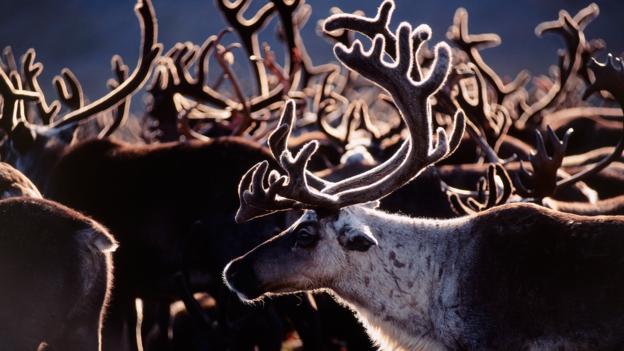
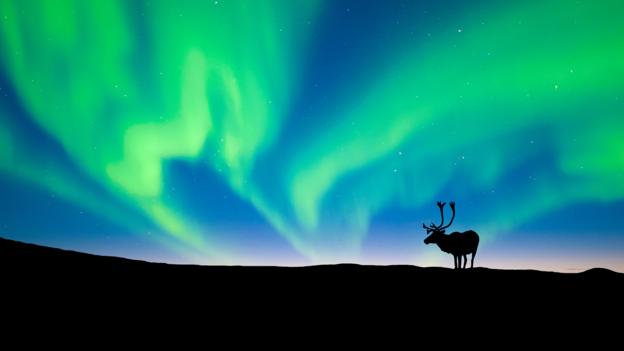
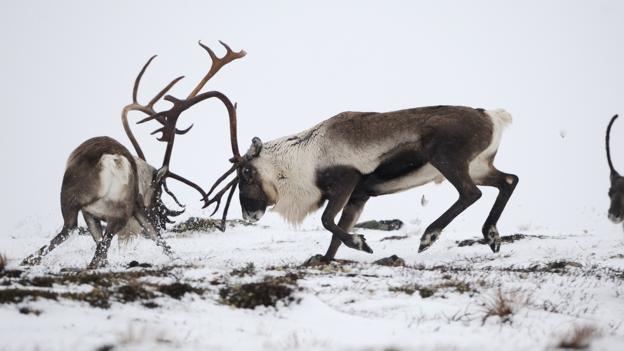
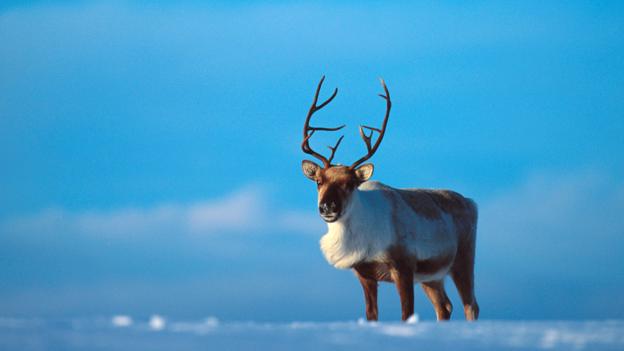
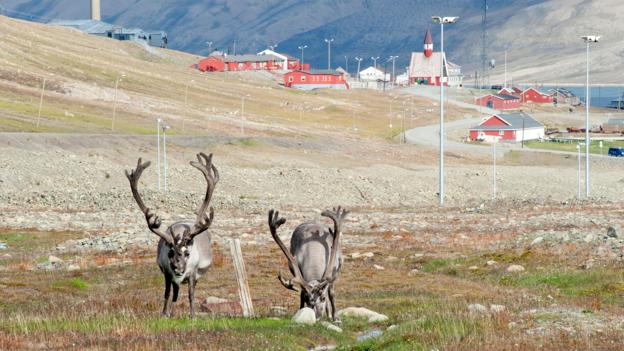
ไม่มีความคิดเห็น:
แสดงความคิดเห็น